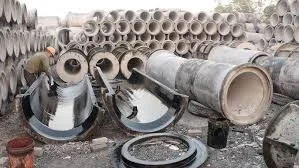- Afrikaans
- Albanian
- Amharic
- Arabic
- Armenian
- Azerbaijani
- Basque
- Belarusian
- Bengali
- Bosnian
- Bulgarian
- Catalan
- Cebuano
- China
- China (Taiwan)
- Corsican
- Croatian
- Czech
- Danish
- Dutch
- English
- Esperanto
- Estonian
- Finnish
- French
- Frisian
- Galician
- Georgian
- German
- Greek
- Gujarati
- Haitian Creole
- hausa
- hawaiian
- Hebrew
- Hindi
- Miao
- Hungarian
- Icelandic
- igbo
- Indonesian
- irish
- Italian
- Japanese
- Javanese
- Kannada
- kazakh
- Khmer
- Rwandese
- Korean
- Kurdish
- Kyrgyz
- Lao
- Latin
- Latvian
- Lithuanian
- Luxembourgish
- Macedonian
- Malgashi
- Malay
- Malayalam
- Maltese
- Maori
- Marathi
- Mongolian
- Myanmar
- Nepali
- Norwegian
- Norwegian
- Occitan
- Pashto
- Persian
- Polish
- Portuguese
- Punjabi
- Romanian
- Russian
- Samoan
- Scottish Gaelic
- Serbian
- Sesotho
- Shona
- Sindhi
- Sinhala
- Slovak
- Slovenian
- Somali
- Spanish
- Sundanese
- Swahili
- Swedish
- Tagalog
- Tajik
- Tamil
- Tatar
- Telugu
- Thai
- Turkish
- Turkmen
- Ukrainian
- Urdu
- Uighur
- Uzbek
- Vietnamese
- Welsh
- Bantu
- Yiddish
- Yoruba
- Zulu
Aug . 21, 2024 15:28 Back to list
Ductile Iron Casting Factories for Durable Manhole Covers and Infrastructure Solutions
The Significance of Ductile Iron Casting in Manhole Covers Production
Manhole covers are an essential component of urban infrastructure, ensuring safety and accessibility while providing protection for vital underground utilities. The materials used in manufacturing these covers play a pivotal role in their durability and functionality. Ductile iron casting has emerged as the preferred choice among manufacturers, thanks to its superior qualities that address the demands of modern cities.
What is Ductile Iron?
Ductile iron, also known as spheroidal graphite iron, is a type of cast iron characterized by its unique microstructure which provides excellent mechanical properties. Unlike gray cast iron, which is brittle and prone to cracking, ductile iron features a graphite structure that enhances its tensile strength and toughness. This results in a material that can withstand heavy loads and resist wear, making it ideal for applications like manhole covers, which are subject to constant traffic and environmental stressors.
Advantages of Ductile Iron in Manhole Covers
1. High Load-Bearing Capacity Ductile iron casting can support substantial weight without deformation. This is particularly important in busy urban areas where manhole covers must endure the pressure of vehicles and pedestrians.
2. Corrosion Resistance The natural resistance of ductile iron to corrosion, especially when coated with protective finishes, extends the lifespan of manhole covers. This is crucial for covers exposed to varying weather conditions and chemical elements.
3. Aesthetic Flexibility Ductile iron can be molded into various shapes and designs, offering municipalities the flexibility to adapt manhole covers to specific aesthetic and functional needs. This is increasingly important as cities strive to create visually appealing environments.
4. Recyclability In an age where sustainability is paramount, ductile iron casting has the advantage of being recyclable. Outdated or damaged manhole covers can be melted down and reformed into new products, minimizing waste and reducing the environmental impact.
manhole cover ductile iron casting factories

5. Ease of Installation Ductile iron manhole covers are relatively lightweight compared to their steel counterparts, making them easier to handle and install. This not only reduces labor costs but also enhances safety during installation.
Manufacturing Process of Ductile Iron Casting
The production of ductile iron manhole covers involves a precise casting process. Factories specializing in ductile iron casting utilize high-quality raw materials and advanced manufacturing techniques to ensure consistency and reliability. The process typically includes
1. Melting Iron High-grade iron is melted in a furnace. The addition of alloying elements such as copper and nickel during this phase enhances the properties of the final product.
2. Pouring and Molding The molten iron is then poured into molds that shape the manhole covers. The molds can be custom-designed to meet specific requirements.
3. Cooling and Finishing Once the iron has cooled and solidified, the covers are removed from the molds. Finishing processes, such as grinding and polishing, are applied to ensure smooth surfaces and edges.
4. Quality Control Rigorous testing is conducted to ensure that the finished products meet industry standards for strength, durability, and safety.
Conclusion
Ductile iron casting factories play a crucial role in the production of manhole covers that meet the demands of modern infrastructure. By combining high load-bearing capacity, resistance to corrosion, aesthetic versatility, and recyclability, ductile iron manhole covers are essential for maintaining the functionality and safety of urban environments. As cities continue to grow and evolve, the importance of durable and reliable manhole covers will only increase, solidifying the position of ductile iron as a key material in urban planning and development.
-
Premium Cast Iron Water Main Pipe: Durable, Corrosion-Resistant
NewsAug.03,2025
-
Durable Cast Iron Water Mains | AI-Optimized Systems
NewsAug.02,2025
-
High-Efficiency Propane Boiler for Baseboard Heat | Save Energy
NewsAug.01,2025
-
Premium Source Suppliers for Various Gray Iron Castings
NewsJul.31,2025
-
Durable Cast Iron Water Main Pipes | Long-Lasting
NewsJul.31,2025
-
High-Quality Cast Iron Water Main Pipe for Durable Infrastructure
NewsJul.30,2025


